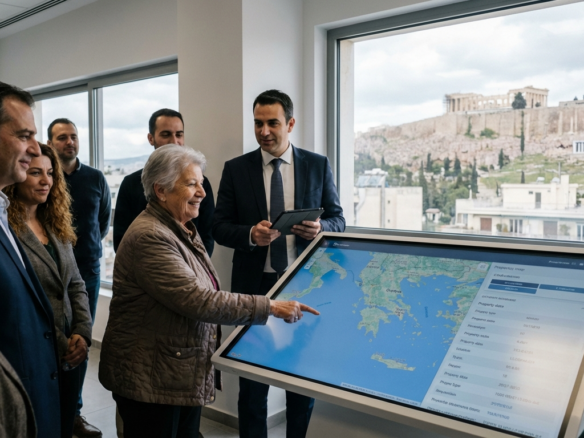Italy’s coastal real estate market continues to captivate international buyers in 2025, offering an irresistible combination of Mediterranean lifestyle, cultural heritage, and strong investment potential. From the dramatic cliffs of the Amalfi Coast to the pristine beaches of Sardinia, Italy’s 7,600 kilometers of coastline present diverse opportunities for those seeking their perfect seaside retreat.
Get 50% OFF!
Subscribe to our newsletter and enjoy a 50% discount on all listing packages, no strings attached!

The Italian coastal property market has shown remarkable resilience, with average prices reaching €3,500 per square meter in prime seaside locations during 2025. This comprehensive guide explores the most sought-after coastal regions, current market trends, and essential information for international buyers looking to invest in Italy’s coveted waterfront properties.
Top 10 Italian Coastal Regions for Home Buyers
Liguria leads the rankings as Italy’s most prestigious coastal destination, with the Italian Riviera commanding premium prices averaging €4,200 per square meter. The region’s crown jewel, Cinque Terre, offers spectacular clifftop properties with panoramic sea views, while Portofino and Santa Margherita Ligure attract luxury buyers with their exclusive marinas and designer boutiques. Properties here range from charming terraced houses in traditional fishing villages to contemporary villas with private beach access.
Tuscany’s coastal areas, particularly the Maremma region and islands like Elba, have experienced a 12% price increase in 2025, making them highly attractive for both lifestyle buyers and investors. The Argentario peninsula stands out with its sophisticated resorts of Porto Ercole and Porto Santo Stefano, where waterfront villas sell for €6,000-€8,000 per square meter. These locations offer the perfect blend of Tuscan culture, world-class cuisine, and pristine Mediterranean beaches.
Sardinia ranks third among Italy’s coastal hotspots, with the Costa Smeralda maintaining its status as a playground for international elite. Property prices in prime locations like Porto Cervo and Baia Sardinia average €7,500 per square meter, reflecting the island’s exclusive appeal and limited development opportunities. The northern coast offers dramatic granite formations and emerald waters, while the southern regions provide more accessible price points starting from €2,800 per square meter.
Campania’s Amalfi Coast continues to command extraordinary prices, with Positano properties reaching €12,000 per square meter for premium sea-view locations. The region’s UNESCO World Heritage status ensures strict building regulations, maintaining property values and scenic beauty. Alternative coastal areas in Campania, such as Cilento, offer more affordable options starting from €2,200 per square meter while still providing access to pristine beaches and authentic Italian coastal culture.
Price Trends: €3,500/m² Average in 2025
The Italian coastal property market has demonstrated strong performance throughout 2025, with the national average price for seaside homes reaching €3,500 per square meter, representing an 8% increase from the previous year. This growth reflects sustained international demand, particularly from Northern European buyers seeking second homes and investment opportunities. Premium locations such as the Amalfi Coast, Costa Smeralda, and Portofino continue to outperform the market average, with some areas experiencing double-digit price appreciation.
Regional variations remain significant across Italy’s coastal markets, with luxury destinations commanding substantial premiums over the national average. Sicily’s coastal properties average €2,100 per square meter, making it one of the most accessible markets for international buyers, while Puglia’s trulli-dotted coastline averages €2,400 per square meter. Calabria offers the most affordable coastal properties at €1,800 per square meter, presenting excellent value for buyers seeking authentic Italian coastal living without the premium associated with more established destinations.
Market analysis indicates that properties within 100 meters of the seafront command a 40-60% premium over similar homes located 500 meters inland. Newly constructed or recently renovated properties with modern amenities and energy-efficient features achieve prices 20-30% above the regional average. The luxury segment, defined as properties exceeding €1 million, has shown particular strength with a 15% price increase in 2025, driven by international buyers from the United States, United Kingdom, and Germany.
Seasonal variations continue to influence the coastal property market, with spring and early summer months generating 65% of annual sales volume. Properties listed during winter months often achieve 5-8% better prices due to reduced competition and motivated sellers. The rental yield potential remains strong in popular tourist destinations, with well-positioned coastal properties generating 4-7% annual returns through short-term vacation rentals.
Tuscany vs Liguria: Market Comparison
Tuscany’s coastal market presents a more diverse range of property types and price points compared to Liguria’s concentrated luxury focus. The Tuscan coast offers everything from restored farmhouses with sea views starting at €3,200 per square meter to ultra-luxury villas in Punta Ala commanding €9,000 per square meter. The region benefits from excellent transport links to Florence and Rome, making it attractive for both permanent residents and weekend homeowners. Tuscany’s coastal areas have recorded 2,847 property transactions in 2025, representing a 14% increase from the previous year.
Liguria’s market characteristics differ significantly, with a stronger emphasis on premium properties and limited inventory due to geographical constraints. The region’s mountainous terrain restricts development, creating natural scarcity that supports higher property values. Average transaction prices in Liguria reached €4,200 per square meter in 2025, compared to Tuscany’s coastal average of €3,800 per square meter. However, Liguria recorded only 1,923 transactions, reflecting the region’s smaller size and higher price barriers to entry.
Investment potential varies between these two regions, with Tuscany offering stronger rental yields due to its broader tourism appeal and longer season. Properties in Tuscan coastal towns like Castiglione della Pescaia and Monte Argentario generate average rental yields of 5.2% annually, while Liguria’s luxury focus produces lower yields of 3.8% but stronger capital appreciation potential. Tuscany’s diverse economy, including agriculture, wine production, and tourism, provides more stable long-term value support compared to Liguria’s tourism-dependent coastal economy.
Foreign buyer preferences show distinct patterns between these regions, with American and British buyers favoring Tuscany’s cultural attractions and wine country proximity, while German and Swiss buyers prefer Liguria’s sophisticated resorts and convenient Alpine access. Tuscany attracts 68% international buyers in coastal transactions, compared to Liguria’s 71%, indicating strong foreign investment in both markets but with different motivational factors driving purchase decisions.
Investment Returns: 7% Annual Growth Areas
Puglia’s coastline has emerged as Italy’s strongest performing investment market in 2025, with certain areas achieving 11% annual price growth. The region’s Salento peninsula, including destinations like Gallipoli and Santa Maria di Leuca, offers exceptional value with average prices of €2,600 per square meter while delivering strong rental returns through increasing tourism numbers. Properties purchased in 2020 have appreciated an average of 34% by 2025, making Puglia the standout performer among Italian coastal regions.
Calabria’s Tropea area represents another high-growth investment opportunity, with coastal properties appreciating 9% annually over the past three years. The region’s dramatic clifftop locations and pristine beaches are attracting increasing attention from international buyers seeking alternatives to more expensive destinations. Investment properties in Tropea and surrounding areas generate strong vacation rental returns, with occupancy rates reaching 78% during the 2025 summer season, well above the national coastal average of 64%.
Sicily’s northern coast, particularly around Cefalù and the Madonie region, has recorded consistent 8% annual growth while maintaining accessible entry prices averaging €2,400 per square meter. The area benefits from improved infrastructure, including enhanced airport connections and coastal road improvements completed in 2024. Properties with restoration potential offer particularly strong returns, with buyers achieving 15-25% value increases through strategic renovations that preserve historical character while adding modern amenities.
Market data indicates that coastal properties purchased for renovation consistently outperform move-in ready homes in terms of capital appreciation. Properties requiring significant restoration work but located in prime coastal positions have delivered average returns of 12% annually when professionally renovated. The key success factors include selecting properties with protected sea views, ensuring proper planning permissions, and working with local architects familiar with coastal building regulations and traditional architectural styles.
Legal Guide: Foreign Property Purchase Rules
European Union citizens enjoy streamlined property purchase procedures in Italy, with no restrictions on coastal property ownership and simplified documentation requirements. EU buyers need only provide valid identification, proof of income, and complete standard property transfer procedures through a notary. The process typically takes 60-90 days from offer acceptance to final completion, with legal fees averaging 2-3% of the property purchase price. EU residents can also access Italian mortgage financing, with coastal properties eligible for up to 80% loan-to-value ratios.
Non-EU international buyers face additional requirements but no prohibitive restrictions on Italian coastal property ownership. These buyers must obtain an Italian tax code (Codice Fiscale) and may need to demonstrate reciprocal property ownership rights in their home country. The documentation process includes apostilled identity documents, proof of funds, and sometimes additional due diligence checks. Non-EU buyers should budget for extended completion timelines of 90-120 days and may find mortgage options more limited, typically requiring 40-50% down payments.
Purchase costs and taxes for coastal properties include several mandatory fees that buyers must factor into their budgets. Registration tax ranges from 2-9% depending on property type and buyer residency status, while notary fees average €2,000-€4,000 for standard transactions. Additional costs include surveyor fees (€800-€1,500), legal representation (1-2% of purchase price), and property search fees. First-time buyers establishing Italian residency can benefit from reduced tax rates, making the total purchase costs 6-8% of the property value instead of the standard 10-12%.
Ongoing obligations for coastal property owners include annual property taxes (IMU) ranging from 0.4-1.06% of cadastral value, plus potential tourist tax in designated areas. Properties used for vacation rentals must comply with local registration requirements and safety standards. Foreign owners should maintain Italian bank accounts for utility payments and tax obligations, and consider appointing local property management services for maintenance and compliance. Annual costs for professional property management typically range from €1,200-€3,000 depending on property size and services required.
Italy’s coastal property market in 2025 presents compelling opportunities for international buyers, combining lifestyle benefits with strong investment potential across diverse price points and locations. From Puglia’s emerging markets delivering double-digit returns to Tuscany’s established luxury destinations, each region offers unique advantages for different buyer profiles and investment strategies.
Success in the Italian coastal property market requires careful consideration of location-specific factors, legal requirements, and long-term market trends. With proper planning and professional guidance, international buyers can secure their piece of Italy’s magnificent coastline while building wealth through one of Europe’s most resilient and attractive real estate markets. The combination of cultural richness, natural beauty, and investment stability makes Italian coastal property an enduring choice for discerning buyers worldwide.





Join The Discussion